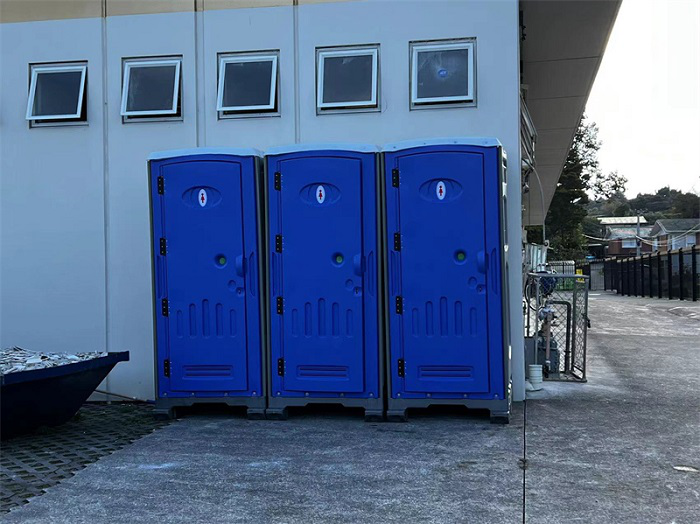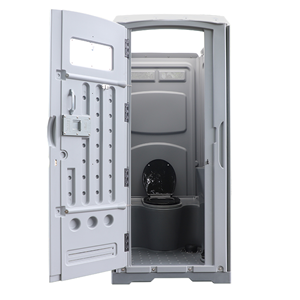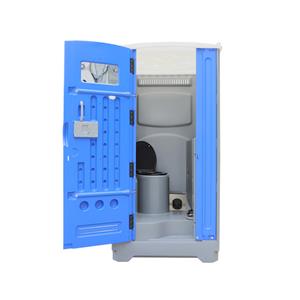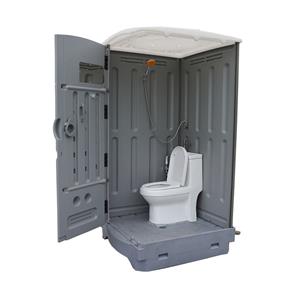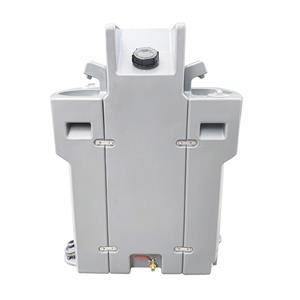The Scientific Marvel of Blue Porta Potty Water: Unraveling the Chemistry Behind the Hue
Have you ever wondered why the water in porta-potties is a vibrant shade of blue? It’s not just a random aesthetic choice; there’s actually a fascinating science behind this unusual hue.
So, if you’ve ever pondered this potty puzzle, get ready for a flush of knowledge! Let’s answer the question, why is porta potty water blue?
The distinctive blue water found in porta potties has long piqued curiosity and sparked questions about its origin and purpose. While it may seem like a mere aesthetic choice, there’s a fascinating science behind the blue hue of porta potty water. In this exploration, we delve into the chemistry and purpose of the blue coloring, shedding light on why it’s not just about appearances but also plays a crucial role in maintaining hygiene and managing waste.
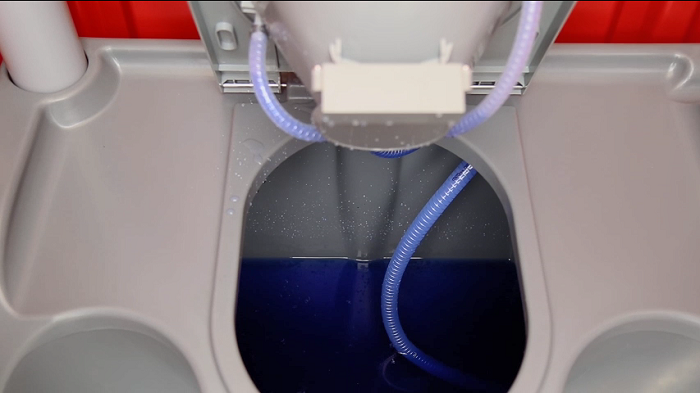
The Purpose of Blue Porta Potty Water
Visual Deterrent
One of the primary purposes of the blue color in porta potty water is to act as a visual deterrent. The
vibrant hue serves as a signal that the water is not safe for drinking. This visual cue is especially
important in situations where porta potties are deployed in crowded events, construction sites, or
emergency relief areas, where people might be tempted to use the water for unintended purposes.
Odor Control
Porta potty water is dyed blue primarily to help conceal and mitigate the unpleasant odors associated
with them.
These porta potty chemicals serves as a visual barrier that masks the appearance of the waste, making it
less visible to users. This not only makes the portable toilet more aesthetically pleasing but also reduces
the psychological discomfort that might arise from seeing the waste. By disguising the waste with a blue
tint, the porta potty environment feels cleaner and more hygienic, which is essential for user comfort.
By concealing the waste visually, the blue dye can also contribute to reducing the perception of odors.
When users enter a porta potty, the sight of waste can be a major source of discomfort and can amplify
the perception of unpleasant smells. The blue coloring helps create an illusion of cleanliness, making
users feel more at ease and less repelled by the environment. Porta potty deodorizer might be added,
too, to further disguise the smell. That makes them a much more pleasant choice for occasions like
outdoor weddings.
Algae Growth Prevention
Porta potty water is dyed blue for another important reason: to prevent algae and bacteria growth in the
holding tank. The blue dye typically contains chemicals that help inhibit the development of these
microorganisms. This is crucial for maintaining the cleanliness and functionality of the portable toilet.
The dark and often damp environment inside a porta potty’s holding tank is conducive to algae
growth. These microorganisms can cause odors, contribute to the decomposition of waste, and
potentially clog or damage the system.
To combat this, the blue dye often contains biocides or antimicrobial agents that hinder the growth of
these unwanted organisms. By doing so, it helps control odors and ensures that the waste remains in a
more stable and manageable state.
Easy Maintenance
The use of blue water in porta potties can help technicians and service providers identify potential issues
or the condition of the holding tank more easily. If the water turns a different color or if there are any
unusual changes, it can serve as an indicator that maintenance or servicing may be needed.
For example, if the blue water appears discolored or murky, it could signal a problem with the tank or
the chemicals.
This makes it simpler for maintenance personnel to detect and address problems promptly, ensuring that
the portable toilets remain in proper working order. That way, you won’t be struggling to source new
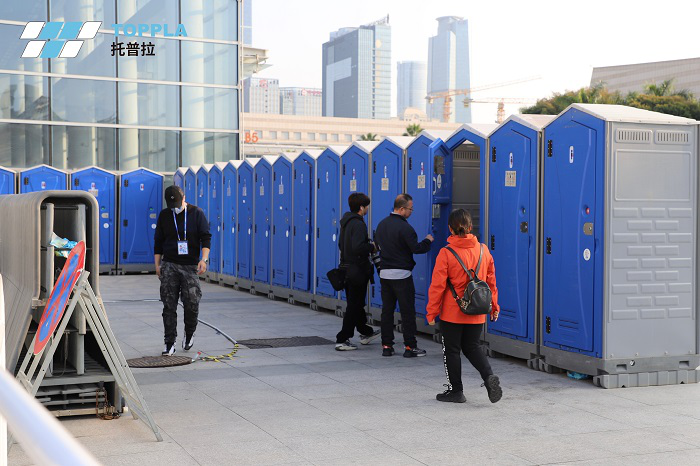
The Chemistry Behind the Hue
Formaldehyde and Dyes
Traditional porta potty solutions used a combination of formaldehyde and dyes to achieve the blue
color. Formaldehyde, a strong preservative, helps control the decomposition of waste and minimizes
unpleasant odors. The blue dye serves the dual purpose of providing a visual signal for non-potable
water and contributing to the overall appearance of cleanliness.
Environmentally Friendly Alternatives
In response to environmental concerns and health considerations, some porta potty solutions have
shifted away from formaldehyde-based additives. Instead, they employ eco-friendly chemicals and dyes
that achieve similar results without the negative environmental impact associated with formaldehyde.
These alternatives often use biodegradable and non-toxic compounds, ensuring a more sustainable
approach to waste management.
Deodorizing Agents
Beyond formaldehyde, modern porta potty solutions incorporate advanced deodorizing agents. These
agents work to neutralize the gases produced during the decomposition of waste, addressing
odor-related challenges more effectively. The blue water, therefore, becomes a visible indicator of the
presence of these deodorizing agents, assuring users that steps have been taken to enhance their
experience.

The Role of Blue Water in Waste Management
Indicator of Water Level
The blue water in porta potties serves as a convenient indicator of the water level in the holding tank.
When users enter a porta potty, the water level rises temporarily, signaling that the waste has been
successfully deposited. Over time, as the waste accumulates in the tank, the water level drops. This visual
cue assists maintenance crews in determining when it’s time to pump out and clean the porta potty.
Preventing Insect Infestation
In addition to its role in waste management, the blue water helps deter insects from breeding in the
porta potty. The chemicals and additives not only control odors but also create an environment that is
less attractive to insects. This is particularly crucial in outdoor events and construction sites where the
presence of insects could pose a health risk and contribute to unsanitary conditions.
The blue water in porta potties is more than just a visual spectacle; it’s a carefully engineered solution
rooted in science and designed to address multiple challenges associated with portable sanitation.
From deterring unintended water consumption to controlling odors and managing waste effectively, the
blue water serves as a multi-functional tool in ensuring a cleaner and more hygienic experience for users.
As technology advances and environmental considerations take center stage, the future of porta potty
solutions will likely see further innovations in chemical formulations and dye alternatives. The ongoing
quest for sustainability and improved user experience will undoubtedly drive the evolution of the science
behind blue porta potty water, ensuring that it continues to be a vital component in the realm of
portable sanitation.
